Backstory
I think I grew up with dysbiosis, as evidenced by allergies, mild asthma, and neuro divergencies (extremely withdrawn and attention deficit). In my 20s developed mild semi-functional CFS due to chronic stress.
In 2020 was exposed to black mold, and had a short very strange illness around this time. Then later I got the first 2 covid vaccines, followed by the booster Dec 2021, which was my major trigger.
Symptoms: Shortness of breath, CFS, chest pain,chest pressure, palpitation, insomnia, fight or flight/anxiety, hallucinations, joint pain, food intolerance, histamine issues, exercise intolerance, PEM, tinnitis, nausea, apparent veinous insufficiency, endotheliatis head pressure, neck pain, POTS, etc. I also grew a nerve tumor (this appeared 2 years later). EBV antibodies showed very high.
Some of these symptoms have gone away, and my intensity of illness is maybe 1/3 of what it was in the beginning, but I seem to have reached a plateau. My Biomesight showed a bunch of issues and I’m looking to correct it in order to give my immune system a chance to normalize.
Analysis
We see an excessive number of bacteria/taxa at very high levels, suggesting they are dominating the microbiome.

Drilling down to Health Indicators
With Dr. Jason Hawrelak Recommendations, we are at the 66%ile, a reasonable level. The MHI-A ratio is low, indicating issues. With Bacteria deemed Unhealthy, Streptococcus vestibularis(An unhealthy Predictor) was at 98%ile and Escherichia coli was at 96%ile. E.Coli can be good or bad (16s is not able to tell them apart) — an ad-hoc test is to try Mutaflor probiotics (E-Coli Nissle 1917) and if there is either a major herx or major improvement, then we can assume a major bad E.Coli component. Mutaflor is aggressive against bad E. Coli.
Using Potential Medical Conditions Detected, one items is a strong match: Postural orthostatic tachycardia syndrome at 85%ile
Using the new Taxa-Symptom Association, we find some strong matches at the order level, which are not there at the genus level. The highest possible factor is 100 (matching every association).
For information on this feature see: Evolution of Addressing Microbiome/Gut issues which includes a video.


Looking at Black Mold, Prevotella growth is associated with mold. We are relatively high, 81%ile. Associations of observed home dampness and mold with the fungal and bacterial
microbiomes [2021]. However, the mold in the environment predictor is at the 30%ile. General advice is to check (and test) for mold in home and work environment; keep humidity low in both.
Scanning General Health Predictors, the only item that stood out was low Vitamin K2 production, which suggests that Vitamin K supplements may be beneficial.
Going Forward
I am going to do [Just Give me suggestion with symptoms] and then suggestions using Order above (the taxa rank that has the highest factor (best match)]. This gives us 6 sets of suggestions. Taxa “Order” is above the data for antibiotics, so sorting to only those items with 6 Takes, we end up with a clean list shown below of all suggestions saying take with high Priorities — sweet!. Lactobacillus casei, siblings (paracasei) and lactobacillus casei shirota (probiotics) dominate probiotics to the exclusion of other probiotics. This group is well known to help allergies and reduce histamine issues.
Items to Take
| Priority | Modifier | Modifier Type |
| 554.7 | lactobacillus casei (probiotics) | Probiotics |
| 499.6 | Curcumin | Herb or Spice |
| 496.6 | vitamin B3,niacin | Vitamins, Minerals and similar |
| 485.8 | garlic (allium sativum) | Herb or Spice |
| 479.1 | Hesperidin (polyphenol) | flavonoids, polyphenols etc |
| 469.2 | lactobacillus paracasei (probiotics) | Probiotics |
| 445.9 | Vitamin B1,thiamine hydrochloride | Vitamins, Minerals and similar |
| 443.1 | Arbutin (polyphenol) | flavonoids, polyphenols etc |
| 443.1 | diosmin,(polyphenol) | flavonoids, polyphenols etc |
| 443.1 | luteolin (flavonoid) | flavonoids, polyphenols etc |
| 443.1 | retinoic acid,(Vitamin A derivative) | Vitamins, Minerals and similar |
| 443.1 | Theobromine (in food) | Prescription – Other |
| 443.1 | Vitamin B6,pyridoxine hydrochloride | Vitamins, Minerals and similar |
| 407.2 | Vitamin B-12 | Vitamins, Minerals and similar |
| 403 | tannic acid | Herb or Spice |
| 395 | soy | Food (excluding seasonings) |
| 385.1 | melatonin supplement | Amino Acid and similar |
| 327 | Guaiacol (polyphenol) | flavonoids, polyphenols etc |
| 324.2 | schinus molle (herb) | Herb or Spice |
| 302 | sesuvium portulacastrum herb | Herb or Spice |
| 300.5 | lactobacillus casei shirota (probiotics) | Probiotics |
| 298.3 | tabebuia impetiginosa (taheebo) bark | Herb or Spice |
| 283.7 | Caffeine | Food (excluding seasonings) |
| 278.9 | whey | Food (excluding seasonings) |
| 277.4 | Human milk oligosaccharides (prebiotic, Holigos, Stachyose) | Prebiotics and similar |
| 271.9 | tea | Food (excluding seasonings) |
| 262.3 | low-fat diets | Diet Style |
| 254.6 | lactose | Sugar and similar |
| 251.8 | vitamin B7, biotin | Vitamins, Minerals and similar |
| 246.7 | chitosan,(sugar) | Sugar and similar |
Items to Avoid
At the other end, only a few items were on the to avoid for all 6 sets of suggestions.
| Priority | Modifier | Modifier Type |
| -443.8 | oligosaccharides (prebiotic) | Prebiotics and similar [6] |
| -411.1 | Bofutsushosan | Herb or Spice [6] |
| -403.4 | non-starch polysaccharides | Sugar and similar [6] |
| -340.6 | Slippery Elm | Herb or Spice |
| -335.8 | bacillus coagulans (probiotics) | Probiotics [6] |
| -334.4 | arabinogalactan (prebiotic) | Prebiotics and similar |
| -314.7 | lupin seeds (anaphylaxis risk, toxic if not prepared properly) | Food (excluding seasonings) |
| -301.7 | carob | Food (excluding seasonings) |
| -298.3 | levan | Sugar and similar |
| -289.2 | Pulses | Food (excluding seasonings) |
| -276.2 | l-proline | Amino Acid and similar |
| -254.6 | macrolide ((antibiotic)s) | Antibiotics, Antivirals etc |
| -252.8 | vegetarians | Food (excluding seasonings) [6] |
| -252.5 | Bile Acid Sequestrant | Miscellaneous, food additives, and other odd items |
| -247.9 | dietary phytoestrogens (isoflavones) | Diet Style |
| -245.6 | pectin | Food (excluding seasonings) |
| -241.7 | barley,oat | Food (excluding seasonings) |
| -241.7 | resistant maltodextrin | Prebiotics and similar |
| -236.3 | amaranth | Food (excluding seasonings) |
| -235.3 | fasting | Food (excluding seasonings) |
| -232.6 | Dendrobium officinale | Herb or Spice |
| -226.2 | fruit/legume fibre | Food (excluding seasonings) |
| -221.1 | Ferric citrate | Vitamins, Minerals and similar |
| -220.7 | xylan (prebiotic) | Prebiotics and similar |
| -218.8 | disodium fumarate (food additive) | Miscellaneous, food additives, and other odd items |
| -216.5 | dairy | Food (excluding seasonings) |
| -216.3 | Olive Oil | Diet Style |
| -215.4 | vsl#3 (probiotics) | Probiotics |
| -212.1 | high-fat sucrose | Food (excluding seasonings) |
Bottom Line
I was also a person who responded very well to Mutaflor (we always have some in the fridge). In my case, the initial response was massive herxing for two weeks.
General Guidance
For items to take, remember that goal is to disrupt the dysbiosis. This means subjecting it to constantly changing “shocks” so it is unable to adapt. This has been shown to be effective when dealing with antibiotics (i.e. rotating between different antibiotics with breaks is more effective than taking the same antibiotic continuously).
My suggestion for a rotating 4 week cycle changing probiotics and herbs every week. Be aware of not falling into either the homeopathic or product labelling traps — that is, taking less then therapeutic levels. To determine those dosages see Supplement Dosages. In general, you want to be close to the maximum dosages used in studies (i.e. “deemed safe dosages”).
Vitamins and polyphenols can be taken continuously.
Feedback
Honestly, whatever algorithm is being used for symptoms is nothing short of amazing
POTS is probably my main challenge, and I have all but two of the other symptoms. And the two that I don’t currently have (joint pain and insomnia) I have had in the past. So basically it’s 100% accurate in my case
For interventions- A friend of mine just mentioned diosmin to me the other day. B3, B1, HMO, caffeine have all been helpful. Amazed to see Curcumin so high as it’s not really something I considered trying.
Mutaflor has been amazingly helpful the last few days (neurotransmitters and gut and fatigue) but I’ve heard it can’t be taken with other probiotics due to competing?
I’m interested in Lactulose for the bifido also, as I’ve heard a lot about this recently.. Thanks for taking the time, very very interesting!
From first draft sent to him.
Also, one question if you have a moment. Are the interventions supposed to – directly improve the biome Or improve symptoms?
Answer: The data is computed to correct the bacteria shifts with statistical associations to symptoms. Adding suggestions for symptoms is another massive data extraction and entering. Readers can do cross validation for symptoms if they are inclined to search the literature (https://pubmed.ncbi.nlm.nih.gov/ )
Here’s an example: https://blog.microbiomeprescription.com/2023/02/12/cross-validation-of-ai-suggestions-for-nonalcoholic-fatty-liver-disease/
Many suggestions have never been tried against the symptoms.
Q: Or can the herbs possibly be mixed w probiotics?
- Yes they can, but you should check that the herb does not inhibit the probiotics currently being taken. To do this, just click on the herb, You want compatible probiotics with the herbs.

Q: Also, do your algorithms pick up probability of sleep apnea and cancer? These are conditions I’m trying to assess my risk of having / getting
- They do pattern matching by two methods:
- Articles on the US National Library of Medicine (go to https://microbiomeprescription.com/Library/PubMed ) AFTER LOGGING IN. It gives the percentile ranking of the number of matches you have compare to other samples.
- Citizen Science based on self-reported symptoms and diagnosis. At present only Sleep Apnea Diagnosis has sufficient data for biomesight samples. For Sleep Apnea, you have 63% of the shifts matching which suggests that you may be heading in that direction, but sleep disturbances have much higher matches.


Q: This is extremely helpful Do you have any idea if there would be an interaction between mutaflor and lactulose? Mutaflor has still been amazing , semi- miraculous. It’s working so well I haven’t tried anything else yet. But I am very keen to get my bifido up
A: It’s an easy lookup on the site. https://microbiomeprescription.com/library/modifier?mid2=1709 and it links to 2 studies which reports it.
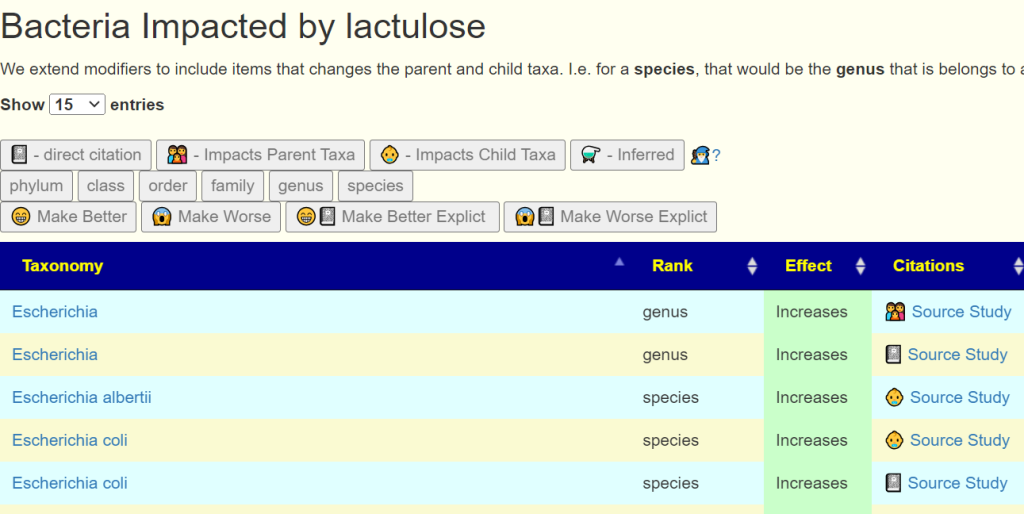
Postscript – and Reminder
I am not a licensed medical professional and there are strict laws where I live about “appearing to practice medicine”. I am safe when it is “academic models” and I keep to the language of science, especially statistics. I am not safe when the explanations have possible overtones of advising a patient instead of presenting data to be evaluated by a medical professional before implementing.
I cannot tell people what they should take or not take. I can inform people items that have better odds of improving their microbiome as a results on numeric calculations. I am a trained experienced statistician with appropriate degrees and professional memberships. All suggestions should be reviewed by your medical professional before starting.
The answers above describe my logic and thinking and is not intended to give advice to this person or any one. Always review with your knowledgeable medical professional.Posted on by Research and tagged




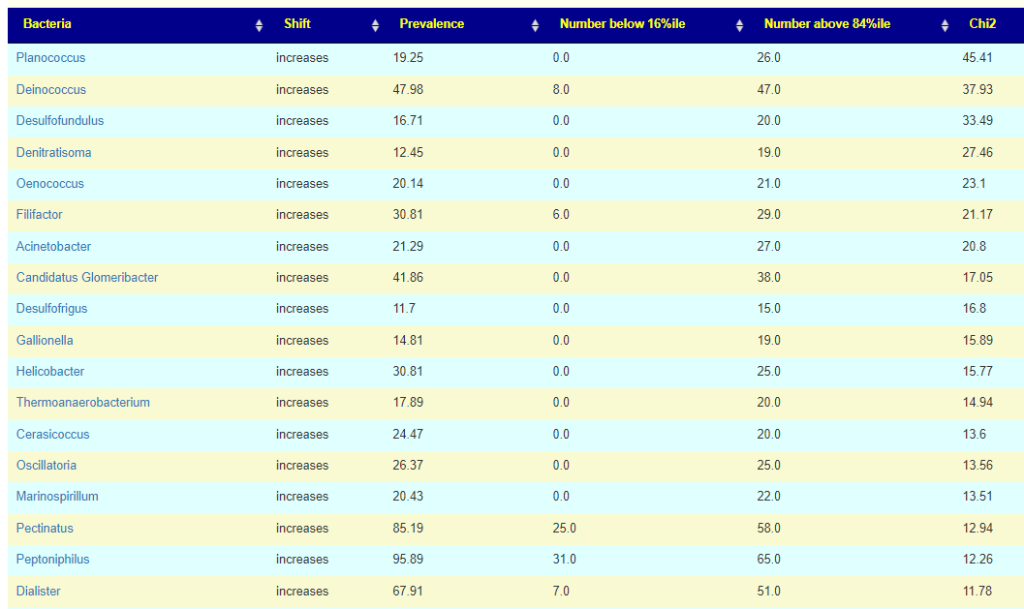
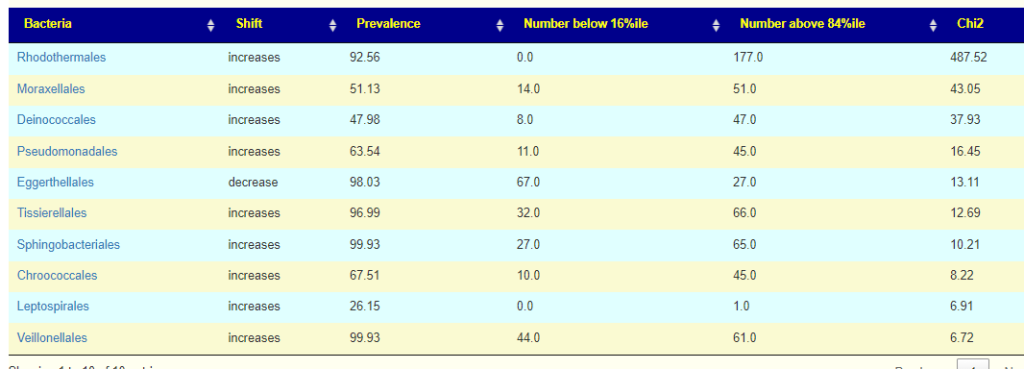
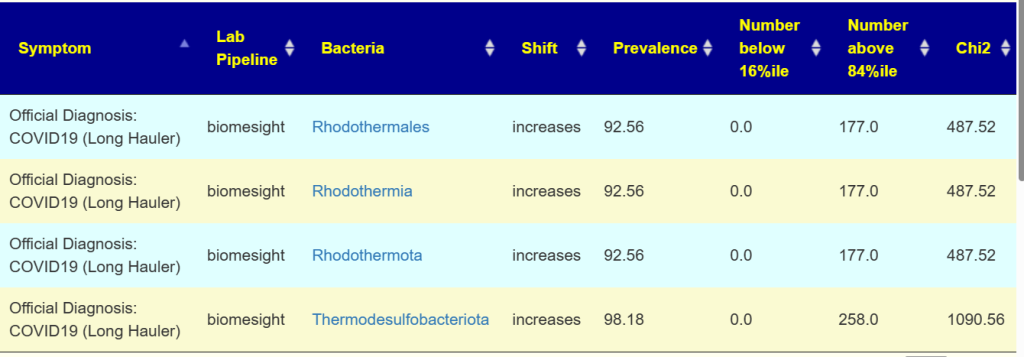
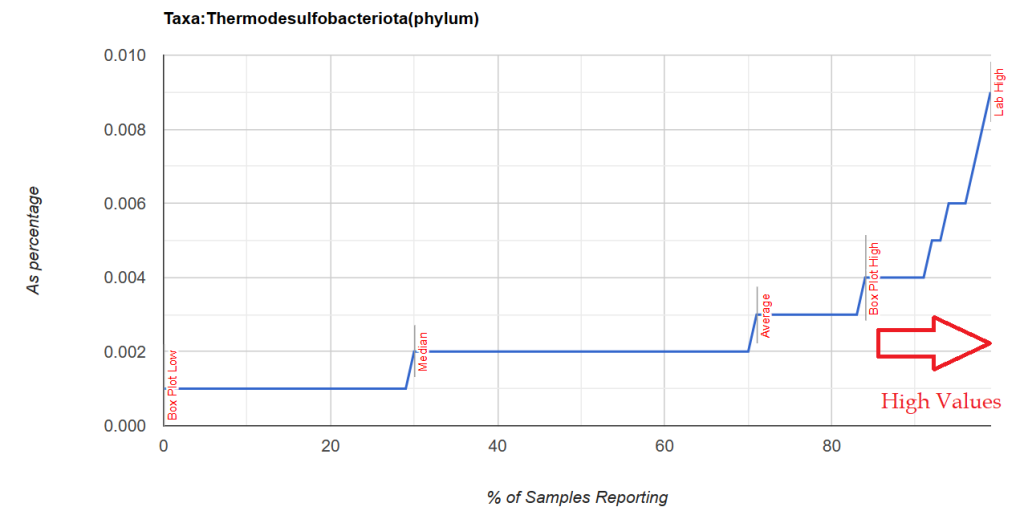
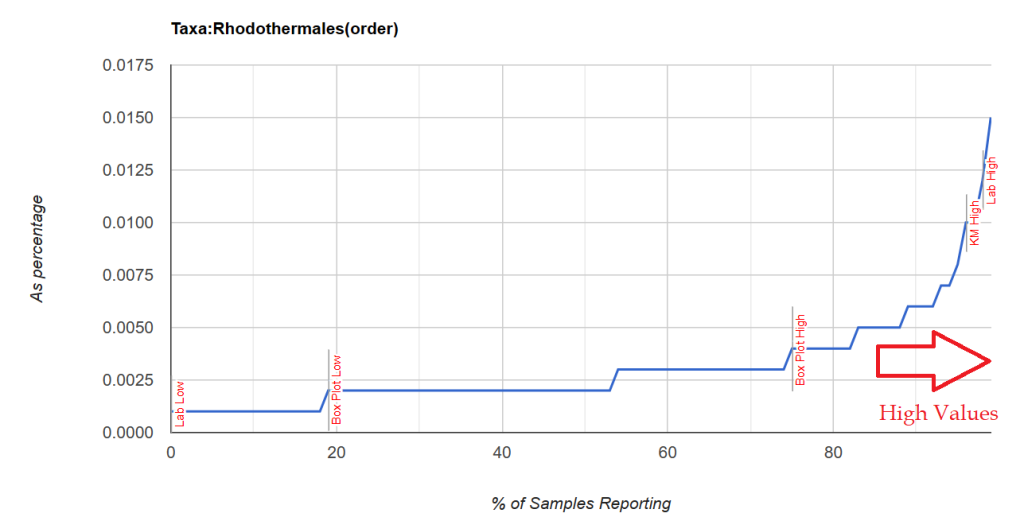



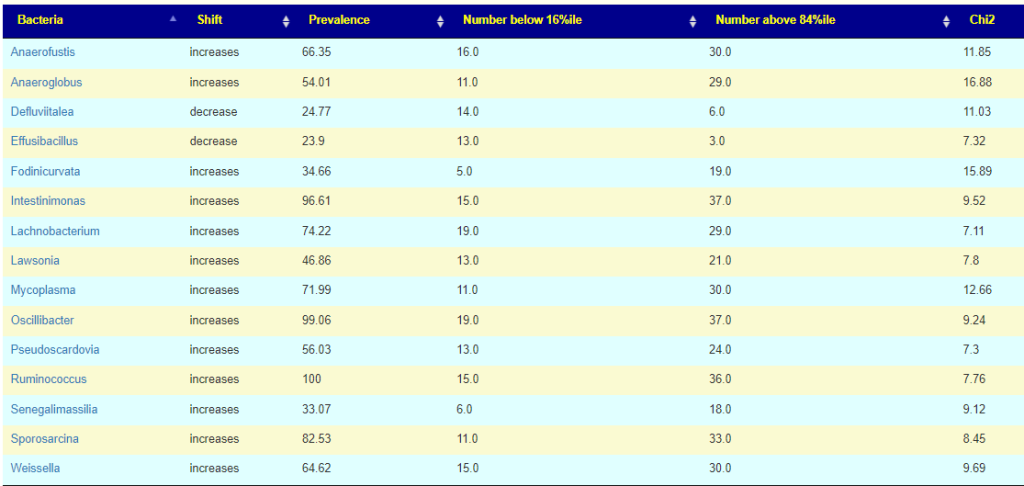
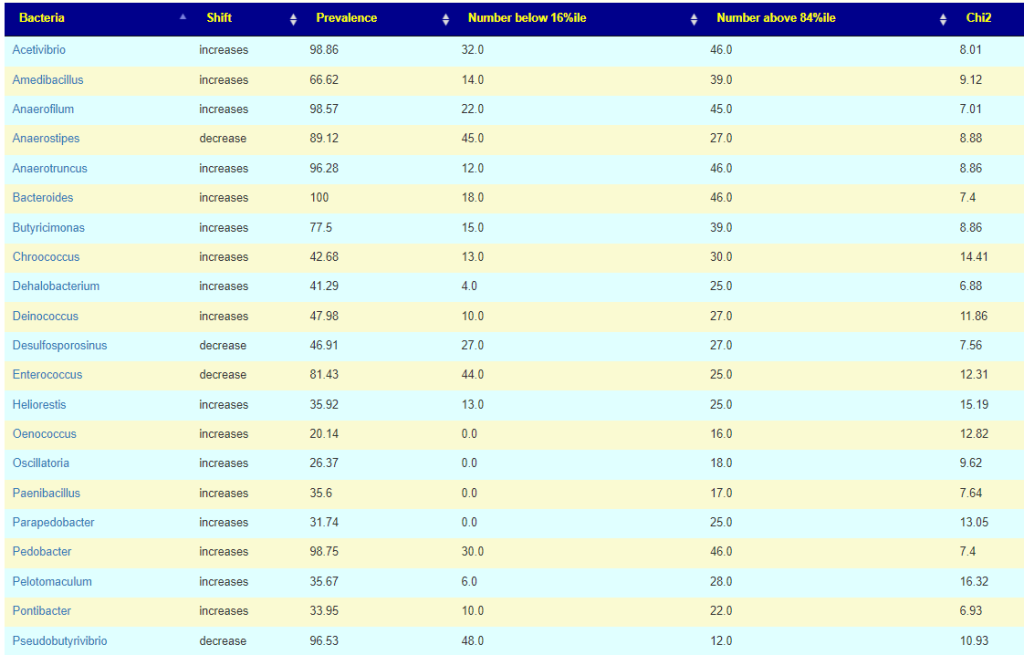






Recent Comments